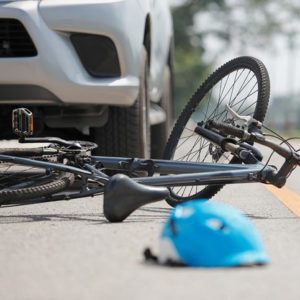Bicycles have become an increasingly popular mode of transportation and recreational activity, with the number of cyclists increasing in recent years. 
In 2022, the National Highway Traffic Safety Administration (NHTSA) released 2022 fatality data showing that more bicyclists were killed by people driving motor vehicles than in any previous year, as reported by NHTSA’s Fatality Analysis Reporting System (FARS). Preliminary data recording of the last year, from 2023 into 2024, also shows a concerning upward trend in accidents and bicyclist fatalities.
According to NHTSA FARS data, 1,105 people riding bicycles were killed by a person operating a motor vehicle on a public road. FARS has existed since 1975, and the previous high was in its first year of reporting when 1,003 people riding bicycles were killed. This number represents a 9% increase from the prior year despite many cities expanding their bike path networks and creating more paved bike paths. These numbers underscore the inherent risk for cyclists who share the road with motor vehicles on city streets.
Bicycle accident statistics shows that bicycle crashes are more likely to result in serious injuries or fatalities compared to other traffic crashes. This is largely due to the vulnerability of bicycle riders, who lack the physical protection that motorists enjoy, such as seatbelts, airbags, and other methods of protection built into trucks and cars.
While bike lanes on city streets are designed to create a safe space for cyclists, they often fall short due to a variety of factors. Collisions with cars and motor vehicle crashes remain common even in dedicated bike lanes. Several causes contribute to these accidents, many of which stem from road users’ actions and bike infrastructure design. Common causes include: distracted driving, reckless driving, road hazards, driver negligence, and poor bike lane design.
Distracted driving is one of the leading causes of bicycle crashes. The consequences can devastate vulnerable road users like cyclists when drivers divert their attention from the road, even for a few seconds. The prevalence of smartphones and in-car entertainment systems has only exacerbated this issue, leading to more frequent instances of dangerous driving behaviors. Cyclists, often occupying the edges of travel lanes, are particularly at risk when a driver’s focus wavers.
The Department of Transportation has identified distracted driving as a “significant contributor to traffic accidents,” including those involving cyclists. Despite laws aimed at curbing this behavior, enforcement is challenging, and the culture of multitasking behind the wheel persists.

Reckless driving endangers cyclists and undermines the security dedicated bike paths and lanes are supposed to provide. For example, a cyclist in a bike lane might assume they are safe from the flow of traffic, but a speeding car could easily veer into that lane, leading to a traffic crash. Therefore, obeying the basic rules of the road helps prevent potential accidents involving bicyclists.
Weather conditions can also transform what might otherwise be a safe bike path into a dangerous route. Rain, snow, and ice make surfaces slippery and can obscure visibility for cyclists and drivers. In such conditions, the likelihood of collisions with cars increases, making bicyclist safety a significant concern.
Driver negligence is another critical factor contributing to bicyclist deaths. This includes drivers who fail to check their surroundings before opening their car doors, a phenomenon known as “dooring,” or those who disregard the presence of cyclists while making turns. In some cases, drivers simply fail to acknowledge the traffic laws that protect cyclists, such as yielding the right of way or maintaining a safe distance.
A lack of understanding or respect for cyclists as equal road users often compounds this negligence. Many drivers are unaware of cyclists’ rights or how to share the road safely with them, leading to collisions with motor vehicles that could otherwise be avoided.
The most significant factor impacting bicyclists’ safety is the design of bike lanes. Some bike lanes on city streets are poorly designed, placing cyclists near fast-moving traffic with little protection. In some cases, bike lanes abruptly end, forcing cyclists to merge with motor vehicles in travel lanes, which increases the likelihood of motor vehicle crashes. Bill Nesper of the League of American Bicyclists says even small changes, such as painting bike lanes green so they stand out or putting up dividers, can decrease the number of bicyclist fatalities.
Additionally, the placement of bike lanes can sometimes be problematic. For instance, placing bike lanes between parked cars and travel lanes can lead to “dooring” accidents, where cyclists are struck by car doors opening unexpectedly. Moreover, intersections can be hazardous if bike lanes are not clearly marked or if traffic signals do not account for the presence of cyclists.
The biggest mistakes people make in designing bike infrastructure often stem from prioritizing motor vehicle flow over bicyclist safety. A truly safe bike lane should provide a safe space for cyclists that is separate from motor vehicles and protected from everyday hazards.

If you or someone you know was seriously injured or killed in a bicycle lane accident, call Regan Zambri Long. Bike accidents often result in catastrophic injuries or wrongful death. Contact our bicycle accident lawyers immediately if you are injured in Washington, DC, Maryland, or Virginia. Our experienced attorneys will work relentlessly to help you secure compensation for medical treatment, lost wages, wrongful death damages, and other losses so that you and your loved ones can focus on recovery.